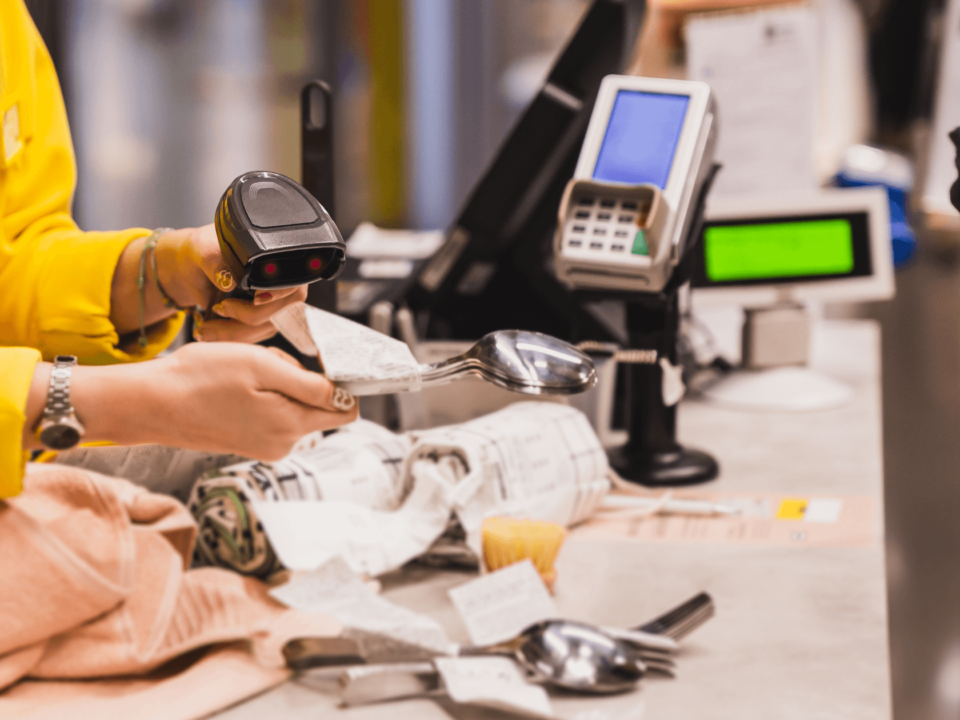
Why Barcode Verification Matters for Your Business
April 2, 2025Contents
- 1 The Importance of Barcodes for Small Businesses
- 2 Understanding Key Product Data Terms
- 3 Selecting the Right Barcode for Your Product
- 4 Costs, Timelines, and ROI Of Obtaining a Barcode
- 5 Common Mistakes to Avoid
- 6 Integrating Barcodes Into Your Operations
- 7 Bringing Your Product to Market with Confidence
- 8 Barcode Label Solutions with AccuGraphiX
- 9 Frequently Asked Questions
New products fail at startling rates—some studies put the figure as high as 80 to 90 percent—and analysts often trace the collapse to supply‑chain snags such as mismatched or missing barcodes. When the tiny pattern of lines or squares on a label misfires, shipments stall, listings vanish, and consumer trust erodes. The good news: securing a proper barcode is straightforward once you understand the steps and the standards behind them.
The Importance of Barcodes for Small Businesses
Retailers, e‑commerce marketplaces, and logistics partners all speak the same digital language: the Global Trade Item Number (GTIN) encoded inside a barcode. A GTIN registered through GS1 US proves that your company owns that number. Amazon’s catalog, a local supermarket’s point‑of‑sale (POS) terminal, and a warehouse scanner can instantly recognize the product. Consistent scans speed up checkouts, drive accurate inventory counts, and signal legitimacy to shoppers. In short, a compliant barcode lets your items move smoothly from factory to shelf while guarding your brand against counterfeiters.
Understanding Key Product Data Terms
Every scannable symbol—whether a classic Universal Product Code (UPC), an EAN‑13 favored overseas, or a two‑dimensional QR square—wraps around a GTIN. Think of the GTIN as the product’s passport number and the printed bars or dots as its machine‑readable face. Linear barcodes like UPC‑A stretch across packaging and work well with ample space. Two‑dimensional symbols such as Data Matrix or QR pack far more data into a compact square, making them perfect for cosmetics vials or electronics circuits. Whatever format you choose, the underlying number must be unique, and the print quality must meet international ISO standards, or scans will fail.
Selecting the Right Barcode for Your Product
Start with your sales channel. Brick‑and‑mortar retailers in the United States almost always mandate a UPC, whereas European stores lean on EAN‑13. Amazon accepts either, but verifies every number against the GS1 database. Next, study your package. If the surface is curved, glossy, or extremely small, a linear UPC may distort; a 2‑D barcode symbol printed in a quiet corner may survive handling better. Finally, consider the environment. Frozen foods, garden supplies, or industrial parts endure moisture, dirt, and abrasion, so pick inks and label stocks rated for those conditions. Getting these decisions right up front prevents costly reprints later.
Costs, Timelines, and ROI Of Obtaining a Barcode
Licensing a GS1 Company Prefix—the short digit string that brands every GTIN you create—starts at $250 for up to ten barcodes and scales upward with larger number blocks (GS1 US). If you need only a handful of SKUs, GS1 US also offers single GTINs for a one‑time fee of $30 without renewals. Artwork updates and label costs vary, but many small firms spend under $300 to integrate the symbol into packaging. Speed is on your side. GS1 sends a welcome email within minutes of payment, and you can assign GTINs the same day (GS1 US). Sellers report that once product details are uploaded to GS1 Data Hub, marketplace systems often recognize the number within one to two days. From kickoff to printed cartons, most startups complete the process in two to four weeks, depending on how quickly final artwork is approved. As for return on investment, barcodes remain one of the cheapest technologies for product identification, costing pennies per label yet unlocking modern inventory automation. Independent studies comparing barcode and RFID tracking still deem barcodes the most cost‑effective solution for many manufacturers, citing rapid payback through labor savings and reduced stock‑outs (ResearchGate).
Common Mistakes to Avoid
The internet teems with free “generate a barcode” tools, but numbers that are not tied to a GS1 company prefix often trigger listing errors or retailer rejections. Equally risky is recycling an old GTIN when a product is refreshed; even minor changes in size or formulation require a new number under GS1 rules. Finally, make sure that the product attributes you enter in Amazon Seller Central or Walmart’s portal—brand name, dimensions, ingredients—match the record in GS1 Data Hub. Discrepancies raise authenticity flags, and listings can be suspended until the data is reconciled.
Integrating Barcodes Into Your Operations
Once labels roll off the press, add each GTIN to your POS system or inventory software so cashiers and scanners instantly recognize price, tax, and stock location. For e‑commerce, embed the number in your store catalog and packing slips to streamline fulfillment. In the warehouse, handheld readers or fixed tunnel scanners paired with GTIN‑enabled software track goods from the receiving dock to outbound pallet, generating real‑time counts that cut safety‑stock costs and speed recalls if problems arise.
Bringing Your Product to Market with Confidence
A legitimate barcode is more than a stripe of ink; it is a passport that lets your merchandise cross digital and physical borders without friction. By obtaining your GTINs from GS1 US, verifying print quality, and synchronizing data with trading partners, you strengthen supply‑chain visibility, protect brand integrity, and unlock channels that were once out of reach. The process costs less than many assume, fits comfortably into most launch timelines, and pays for itself the moment an automated scan prevents an out‑of‑stock or a listing takedown.
Barcode Label Solutions with AccuGraphiX
Need fuss‑free barcodes and a fast turnaround? Connect with AccuGraphiX, your one‑stop partner for GS1‑compliant barcodes, labels, and printing expertise—get a quote today and have your products retail‑ready in days.
Phone: (714) 632-9000
Email: 247@bar-code.com
Frequently Asked Questions
How much does a GS1 prefix cost?
A starter prefix that supports up to ten unique GTINs costs $250 and renews annually for a modest fee, while larger blocks scale in price (GS1 US).
How long does the process take?
Many firms license, assign, and print their first codes within two weeks; GS1 activation and marketplace recognition often occur within 48 hours once data is uploaded (Welcome to Amazon Seller Central). Do I need different barcodes for Amazon and retail stores? No. A single GS1‑issued GTIN works worldwide, but every variant—color, size, bundle—does need its own unique barcode number.
What is a GTIN exemption?
Marketplaces sometimes waive barcode requirements for handmade or customized items, yet any later move into mainstream retail will still demand GS1 identifiers.
Can I create a QR code that links to my website?
Yes. GS1’s 2‑D QR format can embed both the GTIN and a URL, delivering marketing content while remaining POS‑compatible.




